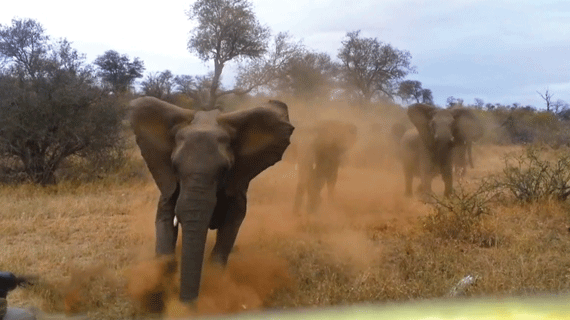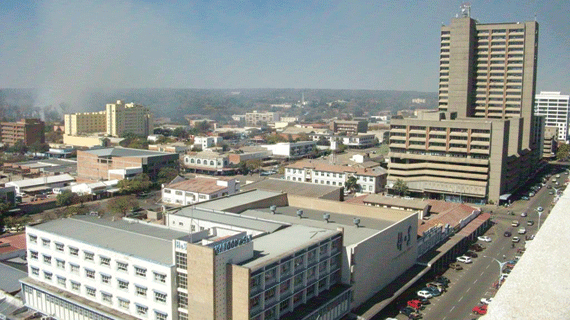
BULAWAYO — Whether it’s buffalo attacks in the tourism hotspot of Victoria Falls, maulings by lions and cheetahs in Hwange, or hyenas roaming populated areas in Chipinge district, an apparent escalation of the conflict between humans and wild animals is unsettling Zimbabweans.
 Scarcely a week has gone by this year without media reports of people being attacked by animals.
Scarcely a week has gone by this year without media reports of people being attacked by animals.
Researchers say the incidents are a consequence of shrinking wildlife habitats at a time when the country’s reforestation efforts are on the back burner.
Despite the observation of Tree Planting Day every December, there are concerns that progress is being countered by rapid deforestation as people seek new land for homes and farming.
According to data from the United Nations Food and Agriculture Organisation, Zimbabwe has around 15,6 million hectares of forest.
Much of this is sparse, dry or open canopy forest, with only 5% classified as primary forest, the most biodiverse and carbon-dense form of forest. Between 1990 and 2010, Zimbabwe lost 29,5% of its forest cover, an average of 327 000 hectares per year.
Experts also blame the wildlife problem on Zimbabwe’s post-2000 agrarian reform programme, which allowed former combatants in the 1970s war of liberation to settle in areas not previously designated for human habitation.
 As the new residents moved into territory that had been home to wildlife, they cleared the land, setting up an inevitable clash between humans and beasts.
As the new residents moved into territory that had been home to wildlife, they cleared the land, setting up an inevitable clash between humans and beasts.
- Chamisa under fire over US$120K donation
- Mavhunga puts DeMbare into Chibuku quarterfinals
- Pension funds bet on Cabora Bassa oilfields
- Councils defy govt fire tender directive
Keep Reading
For Lupane villager Donotio Nyoni, encounters with wildlife have become a living nightmare.
“If the lions are not eating our livestock, they are trying to eat us,” he said. Lupane lies about 170km from Bulawayo and borders Hwange National Park. A seven-year-old boy from the area was killed by a lion in early April.
“What makes life difficult is that while we report the animal menace to the relevant authorities, they don’t act until someone has been killed and we are still not allowed to deal with the problem ourselves,” Nyoni said.
Killing wildlife without a hunting permit is illegal in Zimbabwe and villagers can be charged with poaching. Since 2000, Zimbabwe has seen its forests dwindle, but the government’s land reform policy was not expected to cost human life as well as trees, says researcher Denford Ndlovu.
“Some of the land takeovers were very haphazard, without any supervision from people who would know better about areas fit for human habitation,” Ndlovu said. “The demand for land certainly has had unintended consequences.”
The Community Areas Management Programme for Indigenous Resources (Campfire), a State department responsible for ensuring that communities benefit from natural resources, says shrinking forests have made human contact with wildlife inevitable.
 Environment minister Saviour Kasukuwere reported recently that in the country’s eastern highlands, more than 30 000 hectares of timber plantations had been lost to illegal settlers – a microcosm of the destruction of Zimbabwe’s forests.
Environment minister Saviour Kasukuwere reported recently that in the country’s eastern highlands, more than 30 000 hectares of timber plantations had been lost to illegal settlers – a microcosm of the destruction of Zimbabwe’s forests.
According to Carbon Green Africa, an organisation working on projects for Reduced Emissions from Deforestation and Forest Degradation (REDD+) in Zimbabwe, up to 330 000 hectares of forest are lost annually. Most of the trees are felled indiscriminately to provide fuel wood, especially for curing tobacco leaves, it says.
 The demand for new farmland must be dealt with if deforestation is to be properly addressed, says Lindsay Stringer, director of the School of Earth and Environment at Leeds University in Britain.
The demand for new farmland must be dealt with if deforestation is to be properly addressed, says Lindsay Stringer, director of the School of Earth and Environment at Leeds University in Britain.
“The main cause of deforestation in Zimbabwe is both small-scale and subsistence expansion of farmland, and then tobacco plantations which (are) a growing industry,” Stringer said in an interview. In order for Zimbabwe to pursue its commitments to the UN-backed REDD+ scheme, “the benefits from REDD+ would have to outweigh the economic benefits currently gained from the tobacco industry”, Stringer said. But she also understands the need to cut down trees, at least on a small scale.
 “Trees are an integral part of rural people’s lives. By restricting the use of these trees, everyday practices of the local communities are severely negatively affected,” Stringer said.
“Trees are an integral part of rural people’s lives. By restricting the use of these trees, everyday practices of the local communities are severely negatively affected,” Stringer said.
As the country’s energy crisis continues, amid a huge electricity deficit, deforestation has become a reality rural communities must live with. And for many of them, that means putting up with lions, hyenas and other potential predators as their neighbours.
— Thomson Reuters Foundation










